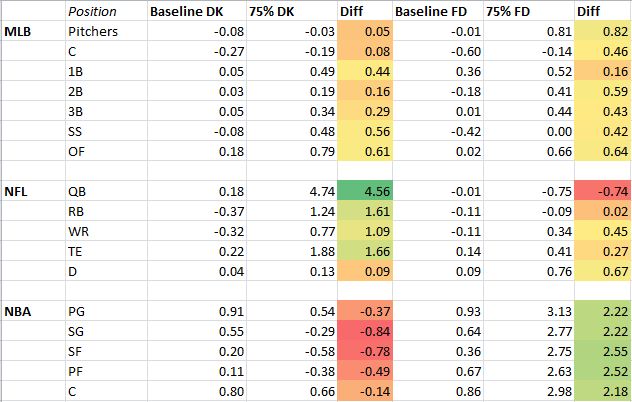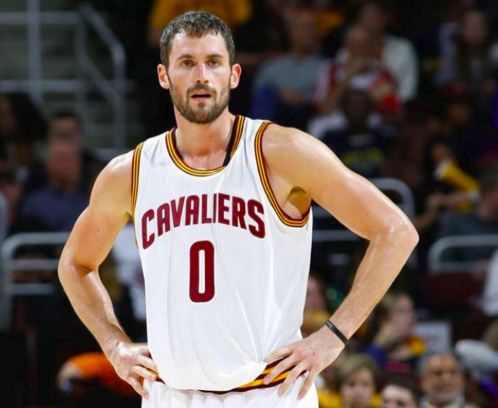In daily fantasy sports, false assumptions lead to mistakes. Until just last week, I fell prey to the “seek-consistency-over-upside-in-cash-games” heuristic that most DFSers use on a daily basis. In general, guidelines or heuristics aren’t bad: They are shortcuts. Most of us don’t have eight hours per day to research lineups, and heuristics can help us streamline our process in a short period of time. They can also, however, be very dangerous.
A sound DFS process is one that uses tested heuristics to streamline, not one that makes assumptions just for the sake of saving time.
How Valuable Is Bargain Rating?
Take Bargain Rating, a FantasyLabs-unique metric that identifies value by measuring the difference between a player’s FanDuel and DraftKings salaries. But there are questions about Bargain Rating: Is a high Bargain Rating better on FanDuel or DraftKings? Is it equally valuable for all positions of a sport? Is it even equally valuable for all sports?
To answer these questions, I used our free Trends tool to measure the baseline Plus/Minus of each position for each sport and then the Plus/Minus of players with Bargain Ratings of 75 or higher. (I did not include PGA DFS or NFL kickers in football, as only DraftKings has the former and only FanDuel the latter.)
Plus/Minus, Bargain Rating, and other premium exclusive metrics are accessible via our free Ratings tool.

What should immediately stand out are huge differences across the sports and positions.
NBA and NFL: Bargain Ratings
The NBA data is particularly telling, although perhaps not that surprising. DraftKings has historically had very tight pricing for NBA DFS, which would skew value to FanDuel players with high Bargain Ratings (those players who are relatively much cheaper at FanDuel than DraftKings). This is incredibly useful knowledge: Simply knowing that DraftKings has tighter salaries and that players should stand out when they’re very underpriced on FanDuel leads to a lot of value. Across positions, you receive an average Plus/Minus bump of +2.34 per player just by exploiting this trend.
Quarterbacks — and the NFL data points in general — are also very intriguing. When QBs on DraftKings have a Bargain Rating of at least 75, they’ve produced a Plus/Minus of +4.75. That is astounding. What is the reason for the huge difference in production?
Whereas NBA DFS sees tighter pricing on DraftKings, NFL DFS seems to feature tighter pricing at FanDuel. The reason isn’t readily apparent — it’s probably some combination of volatility, a higher minimum salary, and the addition of a kicker to the lineup — but it is certainly important. Leveraging the pricing differences of quarterbacks across DraftKings and FanDuel has been very profitable for DFS players.
MLB: Bargain Ratings
The MLB data is right in the middle, hinting that DraftKings and FanDuel price players similarly. This is noteworthy because of the point I made at the beginning of the article . . .
We should not blindly apply metrics and rules across sports assuming that they’ll always hold up. Bargain Rating is incredibly useful in NFL and NBA DFS — but only when applied to the correct platforms. Bargain Rating can also be incredibly useful for MLB — but less so than it is for NFL and NBA.
And that’s OK.
What isn’t OK is continuing to use the metric — or any rule — in MLB just because it’s valuable in NFL and NBA.
Never make assumptions in DFS. And thankfully you don’t need to because . . .





